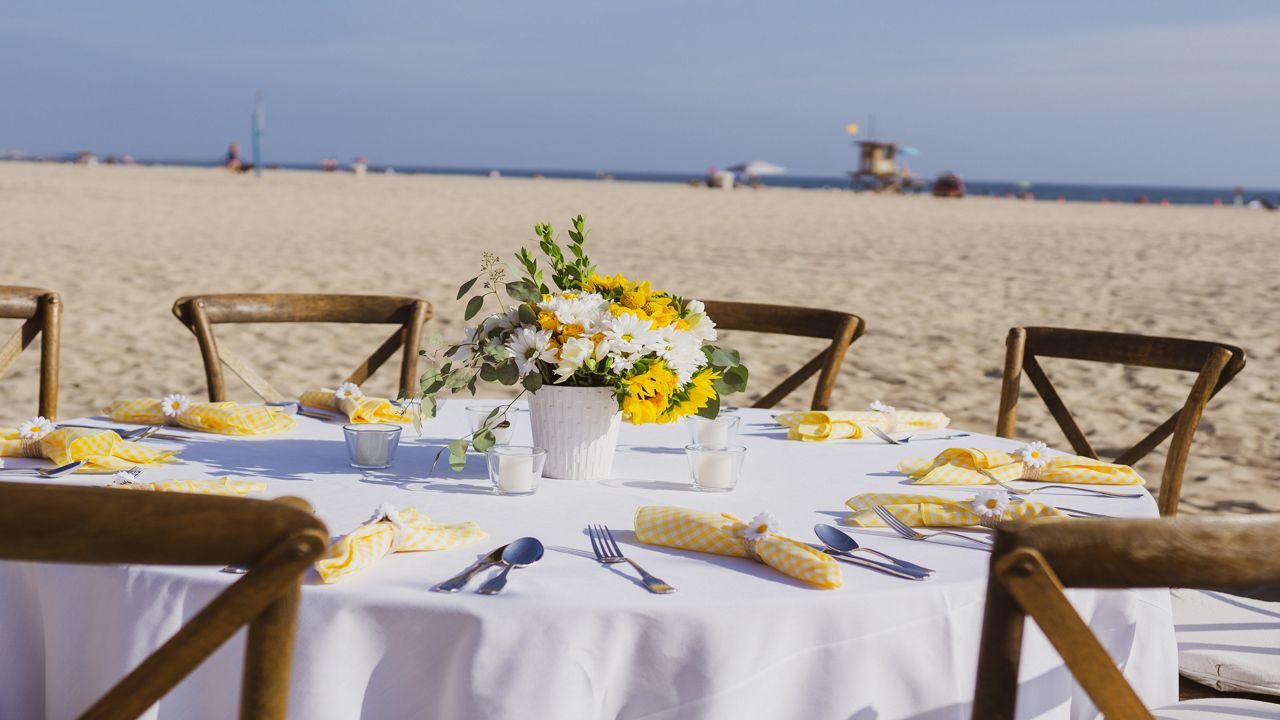Wedding planning has been a challenge these days, mainly due to COVID-19. If there’s one thing we can’t predict, it’s how the pandemic will keep impacting the wedding industry.
However, there are some factors that we at least have a little control over, and that involves the weather on your wedding day.
I know what you’re thinking - there is no way to predict the exact weather scenario on your special day, and you’re right about that, but there are many factors you can look at that will give you the best chance of scoring your ideal weather.
Some of you may know that I am currently planning my wedding here in Southern California. One of the first steps in that process was picking a venue and date. What time of year did we want for our big day? That was the million-dollar question.
We went through all four seasons and discussed the pros and cons of each season - summer, fall, winter and spring. I suggest you do the same when starting your planning process.
We knew we wanted sunshine and a lot of it, meaning we would need to do it during daylight saving time and around the time of the summer solstice so we could guarantee a late sunset.
On the other hand, if you are hoping for kissing pictures in the rain or a winter wonderland as your backdrop, then you will want to plan for the winter months or even early spring.
Once you have a general location and time of year picked out, plus hopefully one or two wedding dates in mind, you will want to weigh the weather options and pick what is ideal for you.
Climate data is going to become your best friend during this process.
You will want to look at average high temperatures and precipitation, which is data based on a 30-year period, on those wedding date options.
In other words, this is a very useful tool and your best bet for looking at the weather trends on or around the time of your projected wedding date.
The National Oceanic and Atmospheric Association (NOAA) offers an online weather data system that we refer to as NOWData. The best part is that anyone can access it, and it is constantly updated.
Bookmark these links and visit them for climate data:
For areas covered by NWS Los Angeles/Oxnard (Ventura and Los Angeles Counties)
For areas covered by NWS San Diego (Orange, San Bernardino, Riverside and San Diego Counties)
This is where you will go to look at the averages. Choose the nearest city or cities to your venue, and go from there. For example, we’ll use the Palm Springs Area, which includes data from both the airport and fire station.
Under location, select the Palm Springs Area. Under product, select daily/monthly normals, and under options, select either monthly or daily depending on what you are looking for. These will give you a general overview of the weather at different times of the year and make it easy to digest with a graph and table of information.
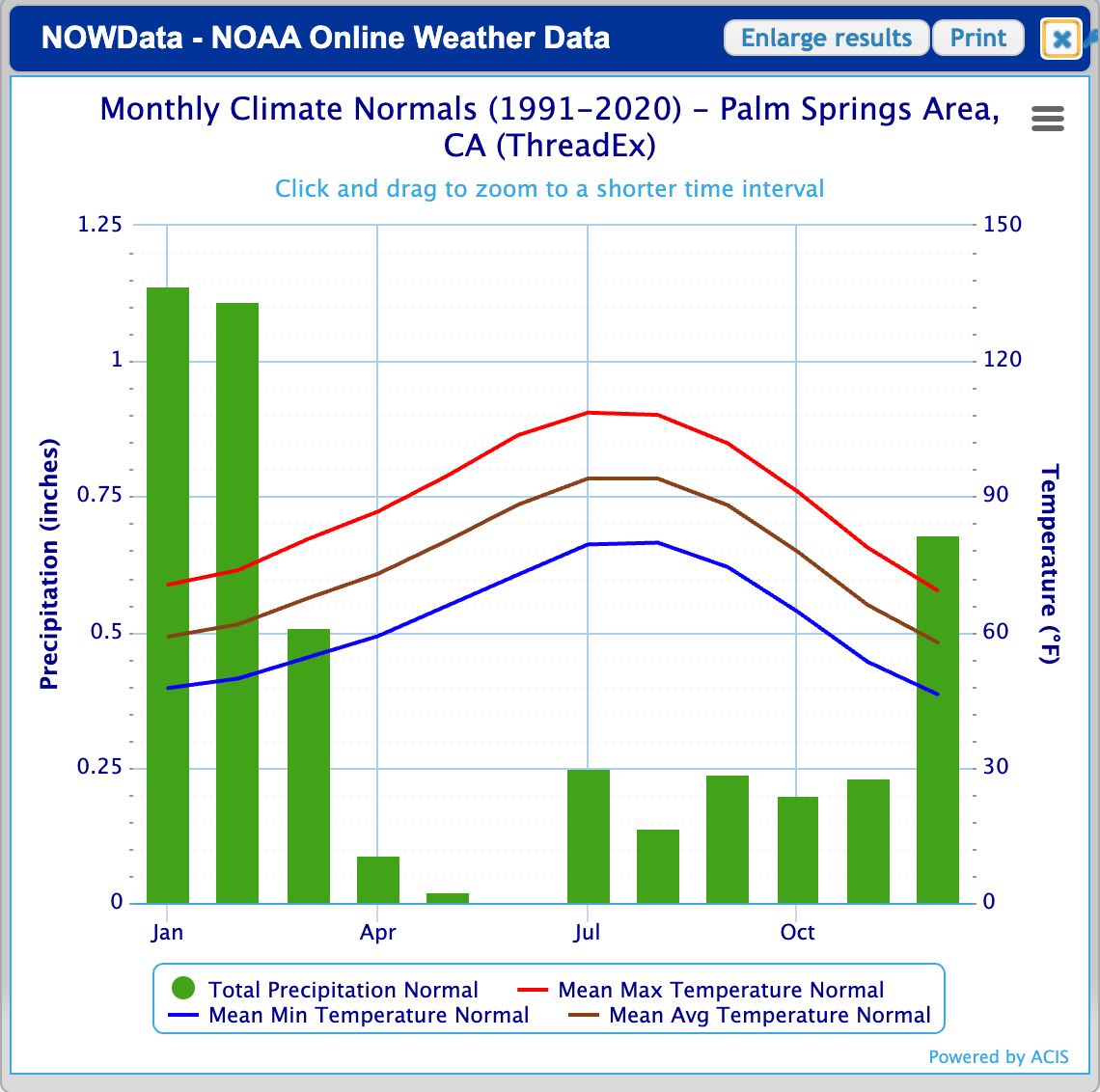
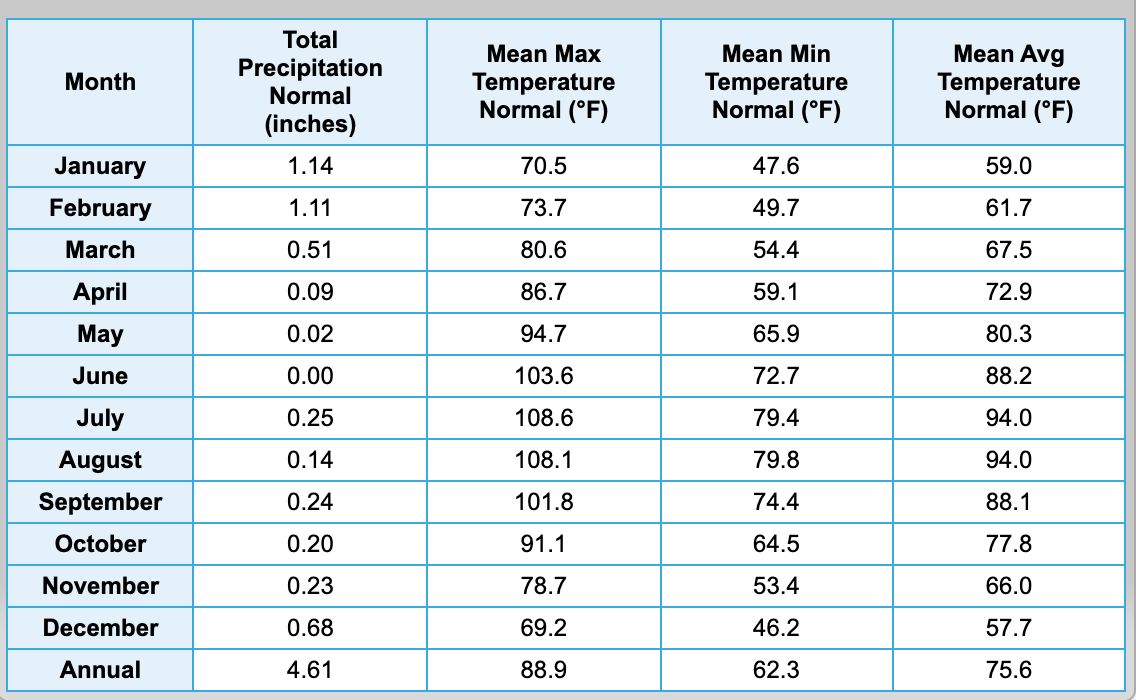
You will want to pay close attention to the total precipitation normal, which shows the average rainfall for each month. You will also want to pay attention to the mean max temperatures normal, which is the average high temperature over the entire month.
This will give you a general idea of the wettest and driest months along with the coolest and warmest months for that city.
Let’s say you want to check out information for one or two specific dates - go back to the main menu and under product click climatology for a day, select a date and year range, and voila. You can now see every max and min temperature, observed rainfall, snowfall and snow depth (if applicable) for that specific day of the year in that city.
This is a good tool to look at trends over the last several years. If there has been a decent amount of rainfall on this day over the last 10 years, then you can assume that may be the case for the following year on your wedding date.
If high temperatures have been over 100 degrees the last five years, you may want to consider that as a possibility on your wedding date.
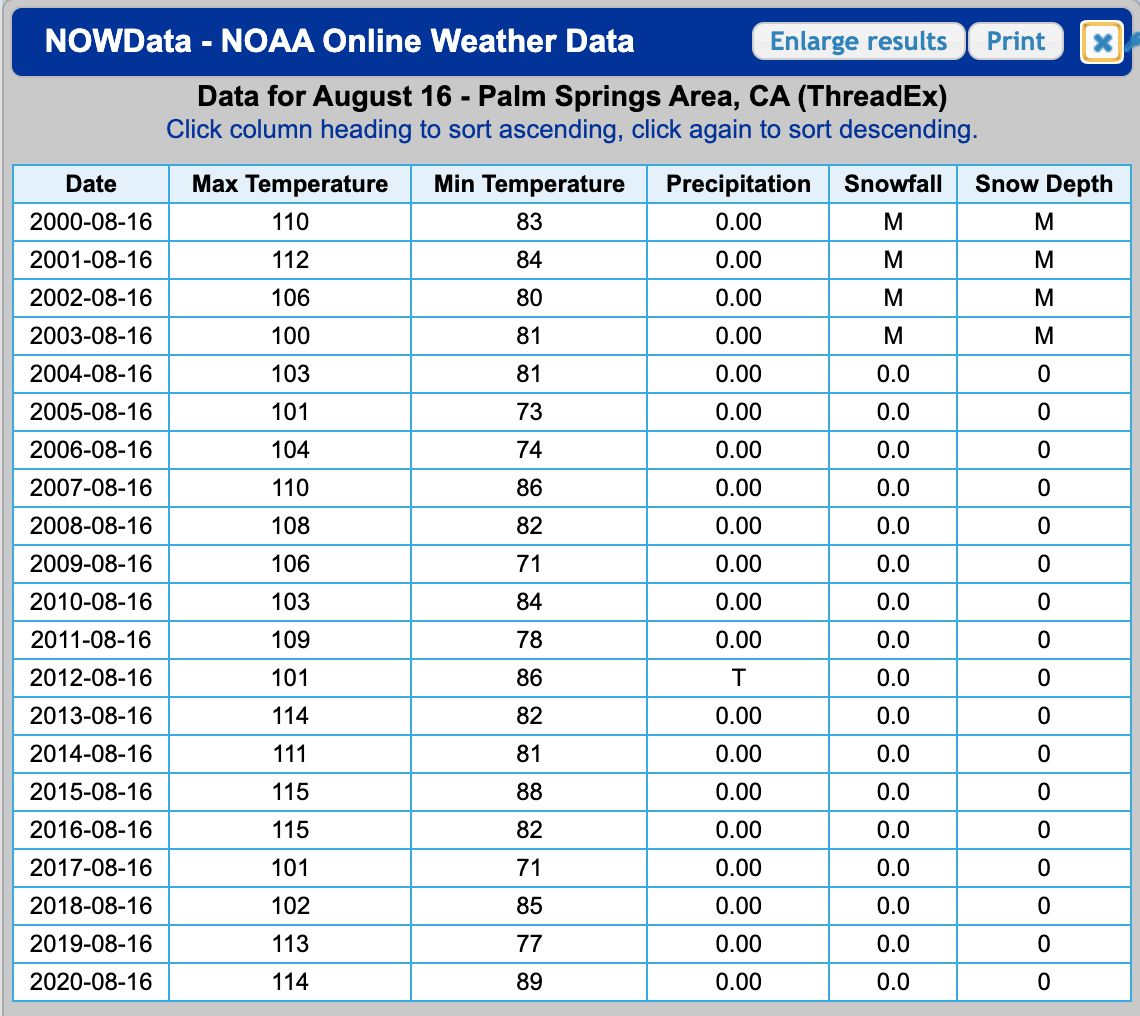
There is also a summary table at the bottom that gives you a general overview of the various weather parameters on that specific day.
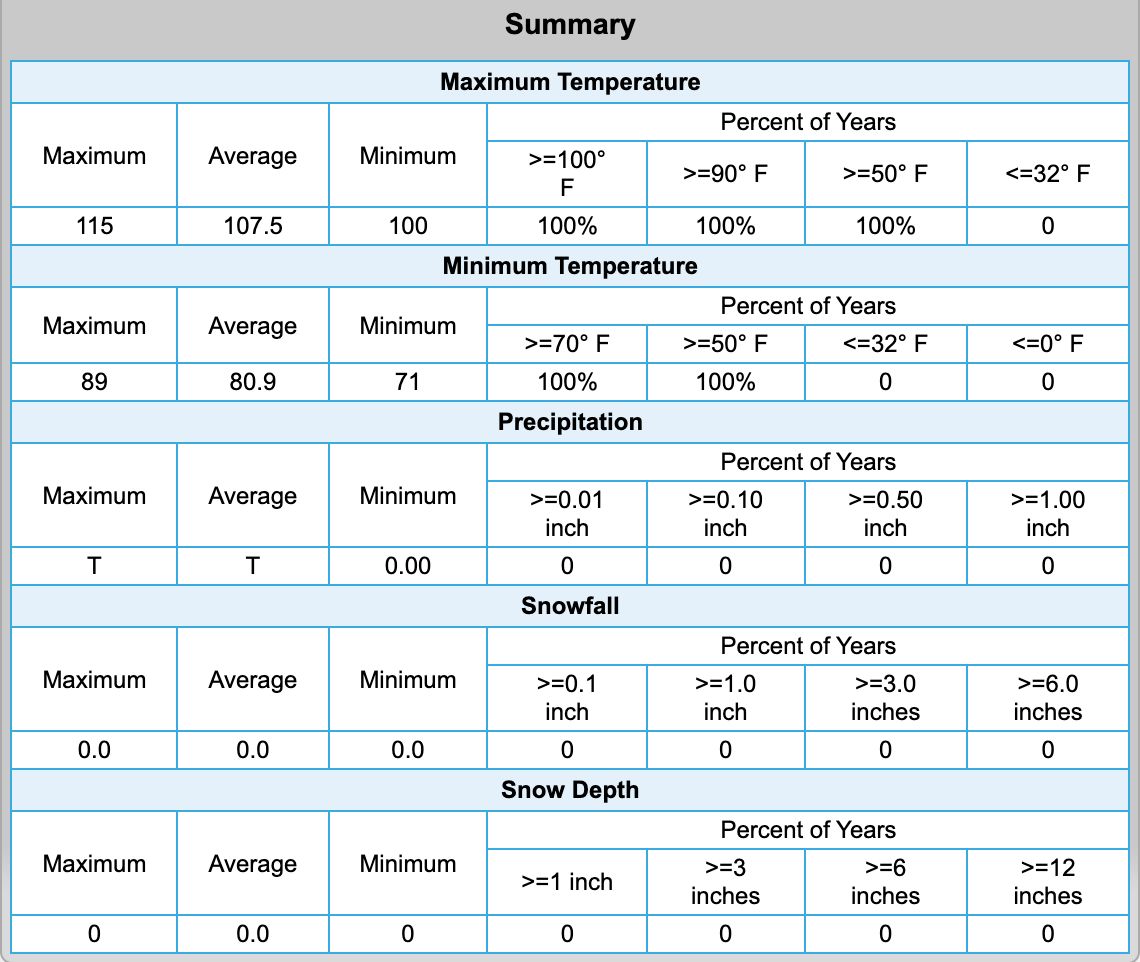
Feel free to explore and check out the other climate data options that NOWData provides.
Hopefully going through the climate data helps you understand the range of weather possibilities that can take place on a wedding day. Most importantly, I hope it brings you one step closer to choosing an official date.
While the NOWData gives you a general idea of what the weather could be like on your wedding day, I want you to understand that weather is not an exact science.
Weather is constantly changing, and just because it’s been in the mid-70s every year on your wedding date, it doesn’t mean it can’t end up being in the 90s once your actual day comes around.
The same thing goes for rain. For example, based on the climate data we looked at above, we know that Palm Springs is generally dry during May and June. If you are trying to avoid rain at all costs, your best bet is to have a wedding during those months.
However, there is always the monsoon season which usually doesn’t begin until early or mid-July, but it can always start earlier than normal. For example, Palm Springs picked up 0.03 inches of rain on June 23 this year. There has been no recorded rainfall in the city on that date during the twenty years prior.
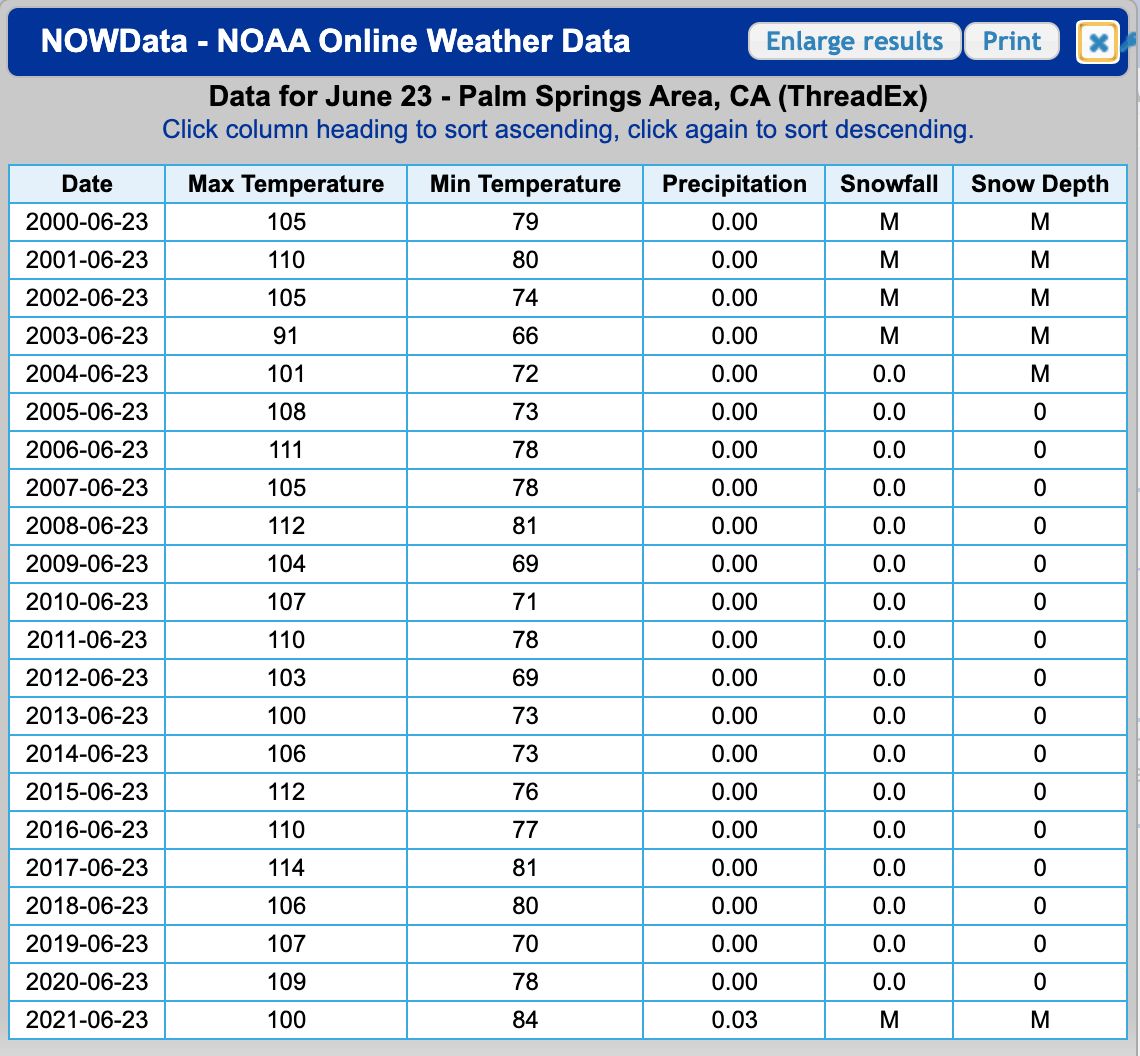
That shows that looking at climate data isn’t the end all be all, but it is a guide. 0.03 inches of rain is still minimal, and it’s probably safe to assume the chance of rainfall is pretty low on the day of your wedding.
On the other hand, you could plan to have a wedding during the rainiest months of the year for most Southern California cities (January and February) and end up with sunny skies and 70-degree temperatures.
The week leading up to your wedding is the week you really want to pay attention to the weather. The forecast is not reliable more than a week out. The closer you are to the event, the more accurate the forecast is, especially when dealing with precipitation chances and timing.
If you ask me a year in advance what the weather will be on your wedding date, don’t be surprised if I chuckle and tell you that is not possible. What I will do is lead you to climatological forecasting tools like NOWData.
There are some caveats that you may also want to keep in mind besides hot or cold temperatures and precipitation.
If you are trying for a beach wedding, remember May Gray and June Gloom or even Fogust is possible across the coastal locations. That has certainly been the case in 2021, but if you recall, in 2020, we did not see much of that due to changing storm patterns and warmer ocean temperatures.
Wildfires are also a big topic to keep in mind, not only across Southern California but across the west in general. Many argue that the fire season is a year-round event now, but whether it’s fire season or not, the mountains and deserts are the most susceptible.
The prime months to watch are July through October. Terrain-driven fire season is what we see during the summer months, while Santa Ana fire season takes place from late summer through fall until our first significant rain event happens, usually between November and December.
The last thing you want is to find your wedding venue damaged by a wildfire or affected by ash/smoke on your special day. If you decide on a venue in the canyons or mountains, or even nearby, be proactive and have a backup option just in case.
While these scenarios are not always the case, as we see fluctuations and varying weather from year to year, you have to think about all the possibilities so you aren’t left high and dry.
Having a backup plan is a must, especially when choosing specific times of the year where the weather can play a big role in your special day.
Also, if your wedding is going to take place entirely outdoors, you will want to have a backup plan to bring everything indoors or under a tent, if needed.
I suggest you choose a venue and vendors that are flexible with that.
The moral of the story - as long as you are prepared, everything will fall into place. Happy planning, and remember that if you do end up with rain on your wedding day, it’s considered good luck!



